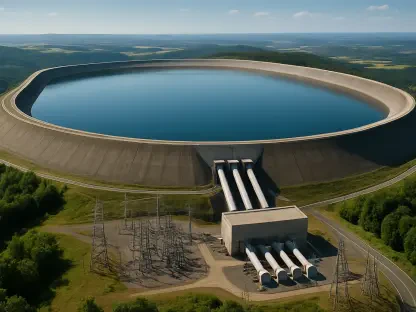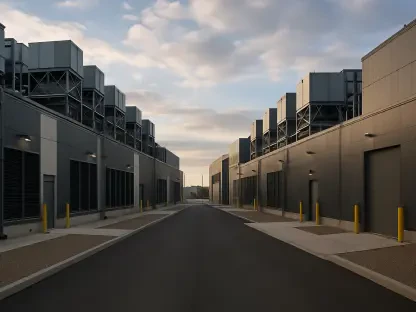The debate surrounding the repeal of technology-neutral clean energy tax credits holds significant implications for the future cost of electricity in the United States, presenting a potential shift in the energy landscape. These credits have historically played a crucial role in promoting the adoption of renewable energy sources by reducing financial barriers for businesses and consumers. As legislative agendas evolve, discussions of their repeal introduce uncertainty into electricity markets, with reverberations expected to reach consumers and industry leaders alike. The conversation is particularly vivid against the backdrop of pledges by past political figures to reassess green energy incentives, emphasizing a skeptical view of government-driven support for renewable ventures.
Economic Ramifications and Industry Pressure
The ramifications of rescinding these clean energy tax credits extend beyond mere price fluctuations, hinting at broader economic consequences. A study by the Clean Energy Buyers Association (CEBA), representing major global technology companies, alerts stakeholders to the tangible risks of increased electricity costs from now until 2032 in nearly twenty U.S. states. Such projections underscore a direct correlation between policy shifts and escalating costs of business operations, an outcome that could disrupt markets reliant on steady energy prices. Sectors such as steel, aluminum, and chemicals, which are foundational to the manufacturing landscape, anticipate increased operational expenses, potentially impacting their global competitiveness and labor market dynamics.
Investor-owned utilities and business alliances are voicing concerns, arguing that removing these incentives may undermine advancements achieved in renewable energy accessibility and economic growth potentials. The CEBA report indicates the strain placed on industries heavily dependent on energy-intensive production processes, subsequently influencing their pricing strategies and profit margins. Through comprehensive analyses of various state scenarios, it becomes evident that the local economies might experience disparate effects, leading to uneven economic growth across regions. This potential dual-speed economy could exacerbate existing disparities, ushering in complex challenges for policymakers intent on fostering equitable economic expansion.
State-Specific Impacts and Technological Demands
State-specific analyses reveal a potential exacerbation of regional disparities as certain areas brace for more pronounced electricity cost surges. Notably, seven states might face double-digit percentage hikes in electricity prices, with predictions for Maine pointing to significant rises in both household and business electricity costs. Such localized effects emphasize the importance of individually tailored policy approaches to mitigate adverse outcomes. States heavily invested in clean energy projects, buoyed by existing tax incentives, face the risk of economic setbacks that may stall further adoption of innovative energy solutions.
Parallel to these regional challenges is the escalating demand for electricity driven by technological advancements and expanding industries. Companies at the forefront of the tech revolution, such as Google, Amazon, and Meta, find themselves in urgent need of reliable and cost-effective energy solutions to propel growth. The increasing reliance on vast data centers and AI-driven applications heightens the pressure on the electricity grid, necessitating a strategic balance between fostering technological innovation and ensuring sustainable resource management. This backdrop of rising energy demand presents a compelling argument for the integration of clean energy policy with broader technological advancement strategies.
Strategic Implications and Future Considerations
The dialogue surrounding these tax credits illustrates a complex web of intersecting interests and strategic calculations. Industrial players and utility providers, championed by associations like the Edison Electric Institute, underscore the value of sustained incentives in securing price stability and ensuring the country’s competitive edge in a global market. These advocates suggest that, beyond mere financial calculations, maintaining incentives aligns with national priorities such as energy independence and security. By strengthening infrastructure resilience and enabling the transition to a low-carbon economy, these credits serve as pivotal tools for long-term economic planning.
Through this multifaceted discussion, one observes the intricate dynamics at play, involving technological, environmental, and economic considerations. The decision to repeal these credits must navigate a landscape where cutting-edge technology and pragmatic energy policy coexist, with implications that extend beyond immediate cost concerns. This intersection necessitates careful deliberation and strategic foresight, balancing trade-offs to sustain innovation without undermining the foundations of economic growth. As stakeholders grapple with these challenges, fostering dialogue across sectors and incorporating diverse perspectives into policy-making processes become increasingly crucial.
Charting the Path Forward
The ongoing debate about repealing technology-neutral clean energy tax credits is poised to impact the cost of electricity in the United States profoundly, hinting at possible changes in the energy landscape. These tax credits have historically been instrumental in encouraging the use of renewable energy sources by easing financial constraints for both businesses and consumers. As legislative priorities shift, discussions on their repeal inject uncertainty into electricity markets, potentially affecting consumers and industry leaders. This discourse gains intensity as past promises by political figures to reevaluate green energy incentives are recalled, underlining a skeptical stance toward government support in renewable initiatives. The reconsideration of these credits could lead to higher electricity costs if the financial incentives that make renewable energy attractive are removed, raising questions about the commitment to sustainable energy transitions and the future of government involvement in such endeavors.









